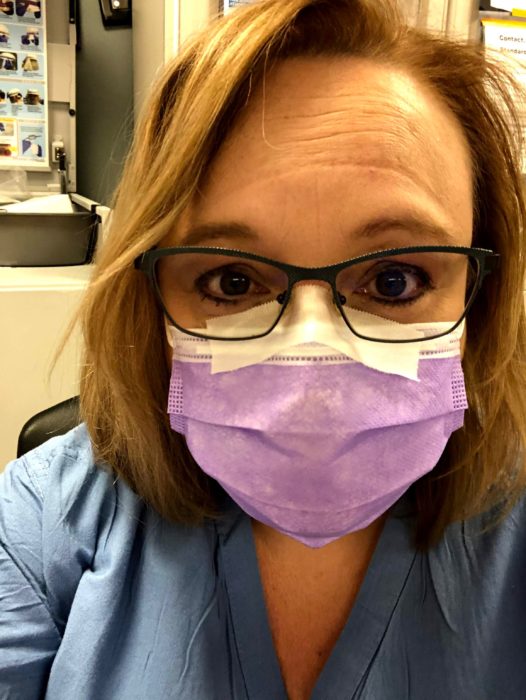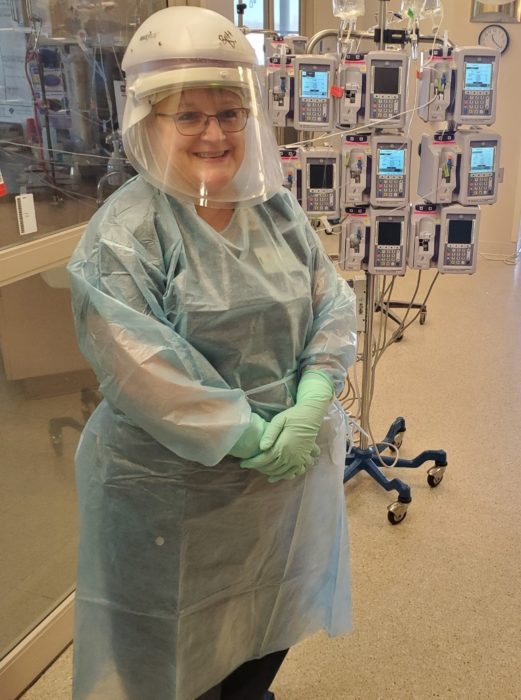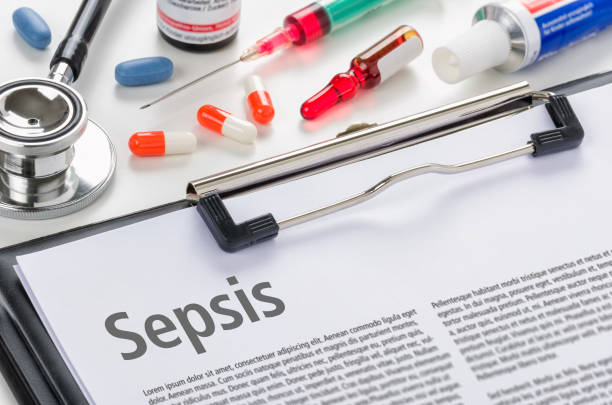On the Frontlines: CRMC ICU Nurse Describes COVID-19 Challenges
November 13, 2020
Note: The following interview took place in late October, before the Cheyenne-Laramie County Health Department issued its face mask mandate for Laramie County, WY.

CRMC ICU nurse Melissa Bechtholdt
Melissa Bechtholdt started out as a registered nurse on a medical-surgical unit in a New Hampshire hospital about 17 years ago. She later worked as a nurse at hospitals in Maine and Douglas, WY. When her family moved to Cheyenne 11 years ago, she began working in CRMC’s Intensive Care Unit (ICU).
“I have stayed on this unit for this long because of the staff. We are a tight-knit group,” she said. “We look out for each other.”
That sense of belonging and caring has become especially important in recent weeks, as the number of critically ill COVID-19 patients being cared for in CRMC’s ICU has dramatically increased.
“Everyone here is so supportive of each other,” Melissa said. “No one is left on his or her own when they are taking care of our patients with COVID-19. There is always someone helping you and checking on how you are doing.”
That includes helping one another with “donning and doffing” the personal protective equipment (PPE) that staff and providers wear every time they enter the room of a patient with COVID-19. PPE includes eye protection, a PAPR (powered air purifying respirator) or an N95 respirator over the nose and mouth, a gown, long gloves and then regular gloves on top of the long ones.
As of late October, Melissa said she’d cared for close to 30 patients with COVID-19 since March.
“For continuity of care, when we have a patient, we usually stay with that patient while they are on the unit,” she explained.
Given the recent spike in the number of COVID-19 patients being cared for at CRMC, Melissa offered to share what it’s like for many of them:
“A lot of our patients with COVID-19 get discouraged because one day they will feel better and then the next day, they feel worse. With this disease, it’s often two steps forward and one step back,” she said.
Another challenge is that ICU patients with COVID-19 can be in the hospital for a month or more, much longer than most other patients. “It’s a long time for someone to be hospitalized,” she said.
Because of how contagious the disease is, COVID-19 patients are also isolated from their families and friends. “We do everything we can to encourage and support them and to help them connect remotely with their families,” she said. “But it is still a lonely ordeal.”
Even eating and sleeping can be challenging.
“For those who can still eat on their own, we tell them to eat slowly, to breath between bites to keep their oxygen levels up,” she said. “We also have them lie on their stomachs as much as possible because that position helps improve their oxygen levels. And we are advising that adults at home with COVID-19 sleep this way to help their bodies better oxygenate.”
Lately the number of patients at CRMC with COVID-19 has spiked dramatically. On October 29, CRMC’s ICU was treating seven patients with COVID-19. Five of those patients were so critically ill they had to be sedated and put on ventilators. The hospital was also caring for 22 patients on its regular COVID unit and was preparing to turn part of its telemetry (heart care) unit into a makeshift ICU in case the number of critically ill COVID patients at CRMC surged. (The number of patients at CRMC hospitalized with COVID-19 has continued to climb since late October. As of November 13, there were 50 inpatients at CRMC with COVID-19, including eight being cared for in the ICU.)
“When I’m out in the community, it’s hard to see people who aren’t wearing face coverings,” Melissa said. “I know what this virus can do to people.”
Melissa said that she and her ICU colleagues have cared for COVID positive patients “both young and old,” including some in their 30s and 40s.
Melissa shared an experience she recently had at a local business where very few people were wearing a face covering. She was supposed to make a follow-up visit but canceled her appointment. “Given what I know about this virus, I didn’t feel comfortable being there,” she said. “They asked, and I told them why.”
While Melissa is wary of going some places in the community due to the lack of face coverings, she feels comfortable caring for patients with the novel coronavirus.
“We’ve been doing this for about seven months now. We know how to take the proper precautions to protect our patients and each other,” she said.

Melissa Bechtholdt, a CRMC ICU nurse, shows the personal protective equipment she wears when caring for patients with COVID-19. In this instance she is wearing a PAPR (powered air purifying respirator) over her face.
Those precautions extend to what Melissa does when she goes home after a 12-hour shift. She changes out of her clothes and shoes in her laundry room. Her husband then opens all the doors on the way to their bathroom, where she immediately showers.
Melissa and her colleagues also don’t bring their work scrubs home. “The hospital supplies our scrubs and washes them for us,” she said.
Another safeguard is that all Cheyenne Regional employees, including those who work at the hospital and its affiliated clinics, have to take their temperature before they come to work and must also answer several “risk factor” questions to be sure they aren’t sick or haven’t potentially been exposed to the virus.
Melissa feels extremely confident about the care being provided to CRMC’s ICU patients, including those patients with COVID-19. “We are here to provide the very best care and do what our patients need to get better,” she said.
Melissa also wanted our community to know how much she appreciates CRMC’s ICU manager, Barb Smith, for her ongoing support and encouragement as the unit has continued to see a spike in the number of critically ill patients with COVID-19 that they are caring for: “Barb makes sure we have what we need to do our jobs. She is always there for us and our patients!”
“Our community needs to realize that many patients who are hospitalized with COVID-19 are in a very challenging situation,” Melissa added. “People need to wear face coverings and do what they can to protect themselves and others from getting this virus.”






